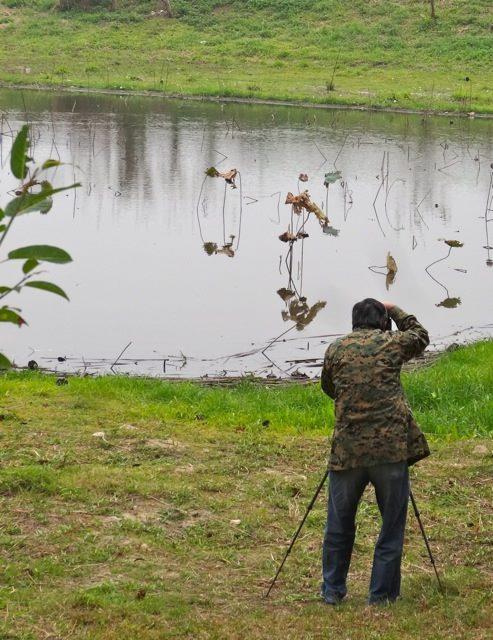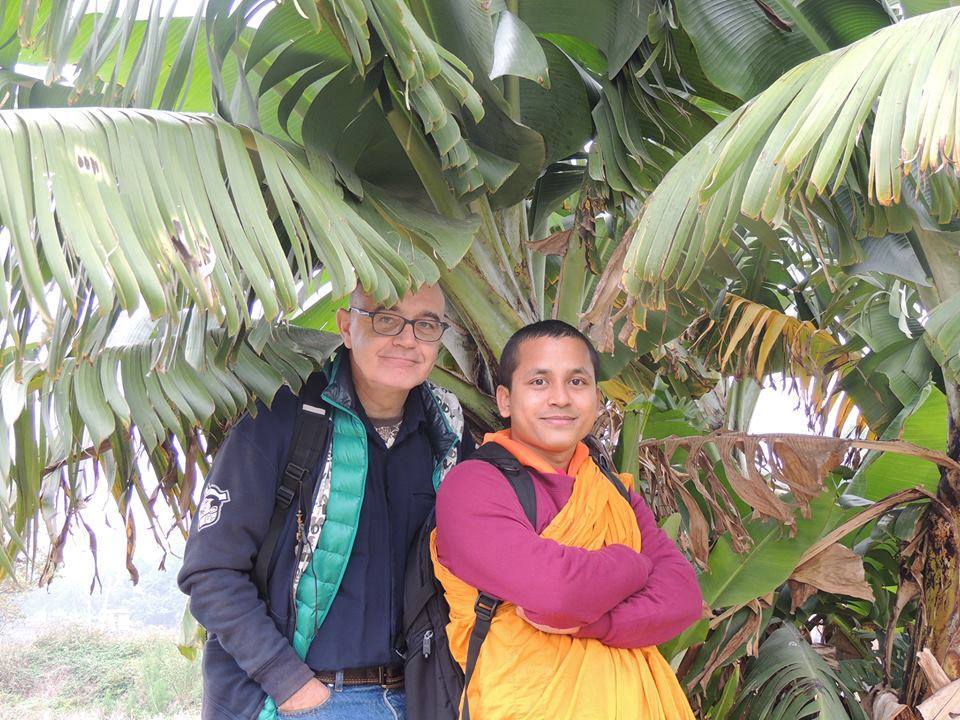Editorial Note: Ven. Priya Rakkhit is a young Therav?da monk from the Chittagong Plain, Bangladesh. He is presently in Hong Kong pursuing Buddhist studies at the Centre of Buddhist Studies, University of Hong Kong. He expects to graduate in May, 2014.
The connection between Buddhism and nature is inseparable. Buddhism was born in nature in the sense that the ascetic Gotama, the founder of Buddhism, attained enlightenment under a Bo tree in a forest on the bank of the Nerañjara River and he delivered his first sermon in the Deer Park. He spent quite a significant part of his life in natural surroundings. Nature is never absent from the four main events of the Buddha’s life: birth, Enlightenment, First Sermon and death. Moreover, he always appreciated nature and encouraged others to do the same.
The most significant instance that shows his attitude towards nature is the week he spent following his Enlightenment staring at the Bodhi tree out of appreciation for the tree that gave him shade during his struggle for final enlightenment. Buddhists consider this as a mark of his gratitude towards the tree. This example is just the first of its kind in Buddhist literature where we can find many other remarkable incidents. The Dhammapada records Buddha’s appreciation for the serenity of forests: “pleasant are the forests, where the ordinary person does not delight.” (Dhammapada: Verse 99)
This is the reason why natural surroundings are considered as a suitable location for meditation practice. In the teachings, we find that one is advised to find a forest or the foot of a tree or a secluded/empty place to practice meditation. For the meditator’s spiritual development, such places are helpful because of the quiet surrounding that helps their meditation practice. Thus we see that, the Buddha and his monastic disciples often spend their time doing meditation in the forest away from the hustle and bustle of the busy city.
The sounds of animals and birds in the forest were quite helpful to them as recorded in the Therag?th?. (1) One arahant named Cittaka says:
Peacocks,
crested, blue, with gorgeous necks,
cry out in Karamvi,
thrilled by the cold wind.
They awaken the sleeper
to meditate.
Another arahant named Vanaveccha says how refreshing it is to be in nature:
With clear waters &
massive boulders,
frequented by monkeys &
deer,
covered with moss &
water weeds,
those rocky crags refresh me.
A nun expresses the following utterance regarding her impression about an elephant that is following its mahout:
Coming out from my day’s abiding
On Vulture Peak Mountain,
I saw on the bank of a river
An elephant
Emerged from its plunge.
A man holding a hook requested:
Give me your foot.
The elephant
Extended its foot.
The man
got up on the elephant.
Seeing what was untrained now tamed
brought under human control,
with that I centered my mind —
why I’d gone to the woods
in the first place. (Ther?g?th?: Dantika and the Elephant) (2)
These beautiful utterances exhibit the great impression that the Buddhist community has for the natural environment. Some intriguing examples tell us more about the relationship with animals. In the P?li Canon, we find an incident where the Buddha is taken care of by an elephant and a monkey during his rainy retreat in the P?rileya forest. The Buddha enters the forest due to a dispute between two groups of monks in the temple at Kosambi. At the end of the retreat, while the Buddha is leaving the forest, the elephant follows him with tearful eyes (Ud?na: N?gasuttam). It is a very unusual incident. From this illustration we learn that even in the solitude of the forest, attended by animals, Buddha lives happily. This interaction between the Buddha and the elephant shows that given the proper attention and love, even animals too can feel the relationship.
On the other hand, a Buddhist monastic’s approach to animals is different from that of ordinary people who use weapons to tame the animals while the Buddhist ideal is to avoid weapons and exercise loving kindness and compassion. A weapon is associated with harm and fear. Instead, according to our abilities, we should spread our kindness to others by giving them protection. In regard to this, the Karan?yamettasutta advises us to extend loving kindness to all beings in all directions, without any boundaries.








From its early days Buddhism proclaimed a prohibition on animal sacrifice. Buddha was a great advocate for animal rights. He challenged the prevalent Brahmin authority by going against their custom of sacrificing animals. He tried hard to make non-violence towards animals as widespread as possible. For that purpose, the first of the five Buddhist moral precepts of ‘not taking life’ concerns all living beings not just human beings. The Buddha instead claimed that all beings deserve kindness and compassion. The rationale is that every living being desires happiness and fears death; therefore we should not harm any being.
The Cakkavatti?s?han?dasutta says that it is the duty of the Universal Monarch to take care of not just the people but also the animals and birds in his kingdom. The Mah?y?nists believe that even animals have the Buddha nature and this encourages the practice of vegetarianism.
The Buddhist Vinaya requires a monastic to avoid harming nature as much as possible. Even when urinating in a remote area, he/she is advised to find a place that has no fresh grass or fresh leaves. The rationale behind the Buddhist rainy retreat also demonstrates a similar implication. One of the main reasons behind the establishment of the Buddhist rainy retreats was to minimize the destruction to the environment. During this season in the rural areas, the wandering from place to place, as it was the practice of religious mendicants, could result in agricultural damage. Therefore, out of concern for the natural environment, the Buddha in the Vinaya advised monks to stay at the temple during this season.
Complete abstinence from engaging with nature is impossible, especially in the case of the laity, moreso if he is a farmer. The layperson is not prohibited from engaging with nature or agricultural pursuits, since he depends on it for his livelihood but the Buddhist ideal of right livelihood as expressed in the Noble Eight Fold Path prohibits him from trading in any animals.
In modern times, buying caged birds and animals to set them free has become a common religious practice for Buddhists as I have seen this in Thailand. In Cambodia monks are also actively propagating the practice of tree ordination to save forests. This practice might have some connection with the belief in tree spirits that implies some impersonal power of trees. Buddhism also clearly says that there are numerous deities or gods inhabiting trees. In fact, on one occasion, monks were teased by deities when they went to practice in a forest. The Buddha then advised them to chant the Karan?yamettasutta and spread loving kindness. Thus, Buddhism inspires us to develop an awareness for a harmonious relationship with nature by showing the inter-relationship between man and his surroundings.
Our visit in December 2013 to Long Valley in Hong Kong’s rural area near Sheung Shui gave us a chance to experience and observe such a harmonious relationship between man and his environment. We noticed how the farmers were busy with their crops, the migratory birds wandered here and there, wild life photographers cautiously prepared and took snapshots and visitors like us carefully enjoyed the scenery. Photographers waited patiently for hours to capture the best shots of the birds. It was interesting to see the wetlands were prepared specially for the birds. We had to be extra cautious so that the birds did not fly away in fear from our approach. The birds were of numerous species and were very beautiful.
This was a completely different scenario from what one might have imagined when thinking about the mega-city of Hong Kong. Thanks to our two patient guides who took great care of us, leading us along the journey and explaining in detail a lot of information that was new to us.
Finally, I would like to conclude by saying that, considering the unlimited resources that nature provides us with, we have only to be grateful and try our best to do the least harm to our environment. Saving other living beings such as animals, birds, etc. is also very important for the earth’s eco-system as we are all inter-dependent. Let us try to preserve nature as a means to develop our spirituality as expressed in the words of the late Thai monk Buddhad?sa Bhikkhu:
“Dhamma is the secret of nature which must be understood in order to develop life to the highest possible benefit.”
Anapanasati – Mindfulness with breathing; Unveiling the secrets of life: A manual for serious beginners (3)
Note from the Editor: Following the trip to Long Valley in December 2013, the participants set up their own Facebook group page, International Monthly Outgoing Group, HK, to further explore and experience the natural environment in Hong Kong by organising ongoing monthly gatherings and excursions.
Footnotes:
1) Taken from http://goo.gl/OS5v00 on December 21, 2013.
2) Taken from http://www.accesstoinsight.org/tipitaka/kn/thig/thig.03.04.than.html
on January 7, 2014.
3) Taken from http://goo.gl/6kn1qb on January 14, 2014.
References:
1. The Long Discourses of the Buddha. Trans. Maurice Walshe (Boston: Wisdom Publications, 2012).
2. The Ud?na and the Itivuttaka. Trans. John D. Ireland (Kandy: Buddhist Publication Society, 2007).
3. Elders’ Verses I. Trans. K.R. Norman (Oxford: Pali Text Society, 1995).
4. Poems of Early Buddhist Nuns. Trans. C.A.F. Rhys Davids and K.R. Norman (Oxford: Pali Text Society, 1989).












this is so BUDDHIST. BUDDHA IS MY KING.